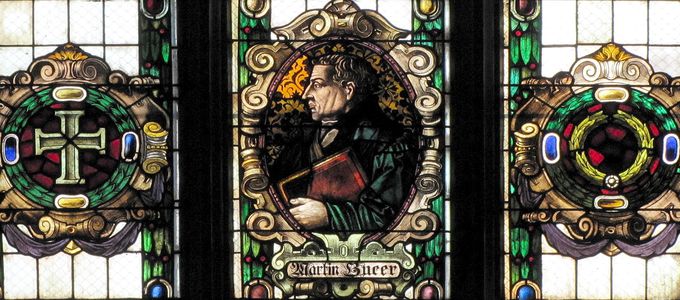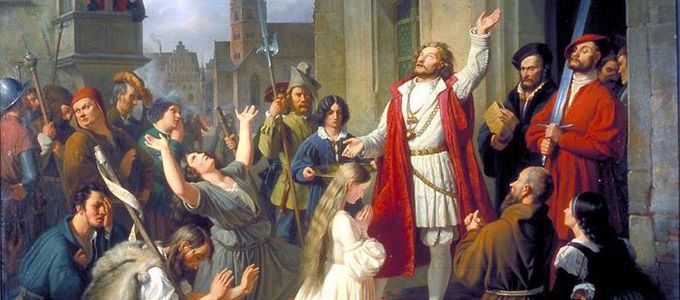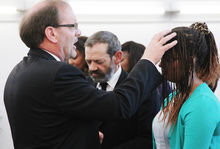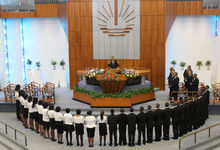An influential mediator
While in Germany to celebrate Easter this coming weekend, the Chief Apostle will come across traces of a fellow Frenchman: a man from Strasbourg who drafted an ordinance in Marburg (Germany) that is being observed all over the world in these weeks.
Marburg is the name of the university city in which Chief Apostle Jean-Luc Schneider will celebrate the Easter service this coming weekend. There is a street in Marburg that is named after a man who originally came from the Alsace region in France. Who was this Martin Bucer? For an answer we have to go back almost five hundred years.
In opposition to the state and the church
They were the radical movement of the Protestant Reformation: the Anabaptists. Many of them opposed authority, especially civil authority and the state. This was not only reflected by their refusal to perform military service or pay taxes.
At the beginning of 1534, the Anabaptists took over the city council of Münster, Westphalia. They introduced common ownership of goods, had the city archives burnt, and declared their own kingdom. The latter ended in the middle of 1535 in a bloodbath—following the siege by an alliance of feudal lords.
Mediating instead of killing
One of the members of this alliance was Philip of Hesse, a landgrave. He had his own problems with the Anabaptists at home in Hesse. He could have applied the full force of the medieval heresy laws, but he did not want to do this, as he wrote in 1536: “We feel that it would not be right to kill a person for his faith.”
Then Philip, who was described as magnanimous, remembered a man whom he had lodged in his castle in 1529: Martin Bucer. When controversies had developed at the Marburg Colloquy between Martin Luther and Ulrich Zwingli, the two prominent reformers, Martin Bucer had proven to be quite a talent at mediating between the two.
Confirmation as a bridge
For five days, Martin Bucer talked with the leading Anabaptists who were incarcerated in Marburg. Then he drafted a document that went down in church history as the “Ziegenhainer Kirchenordnung” (Ziegenhain Church Order). The paper was so convincing that the Anabaptists peacefully returned to their original communities.
There is a crucial point worthy of note. The Anabaptists rejected baptism of children, because small children were not in a position to make a conscious decision for Christ. Bucer suggested a compromise: before their first participation in the Eucharist, children were to be instructed in the doctrine of the Church and then profess their belief before the congregation. This was a belated yes on baptism—and marked the birth of confirmation.
The father of evangelical confirmation
These ideas were not really all that new. For many centuries, confirmation had made children in the Catholic Church full members of the Church. But the reformers rejected this sacrament. At the same time, however, they were reflecting on how they could effect the transition from baptised child to full Christian.
Martin Bucer was the first who was able to bring these approaches together and draft a valid Church ordinance. Although it was only valid for the area around Marburg, the model spread inexorably: from Hesse to Cologne and on to England, and parallel to this to northern and southern Germany, as well as to Austria.
Confirmation has been one of the acts of blessing administered by the New Apostolic Church since its early beginnings in the nineteenth century. Similarly, the close relationship to water baptism has remained: the confirmation vow dates back to the text of an old baptismal liturgy from the third century.
Article info
Author:
Date:
Keywords:
Andreas Rother
12.04.2017
France,
Confirmation,
Doctrinal instruction,
Denominations,
People/Personalities,
Germany


















